13 Must-Visit Destinations for History Lovers
For history enthusiasts, traveling to destinations with deep historical significance offers an unforgettable journey through time. From ancient ruins to iconic landmarks, these unique experiences provide a chance to explore the past in a meaningful way. Whether you are walking through the remnants of ancient civilizations or standing before world-famous monuments, these travels allow you to connect with history like never before. Get ready to immerse yourself in stories that have shaped our world and discover the rich legacies that continue to inspire awe today.
This post may contain affiliate links, which helps keep this content free. Please read our disclosure for more info.
Pompeii, Italy
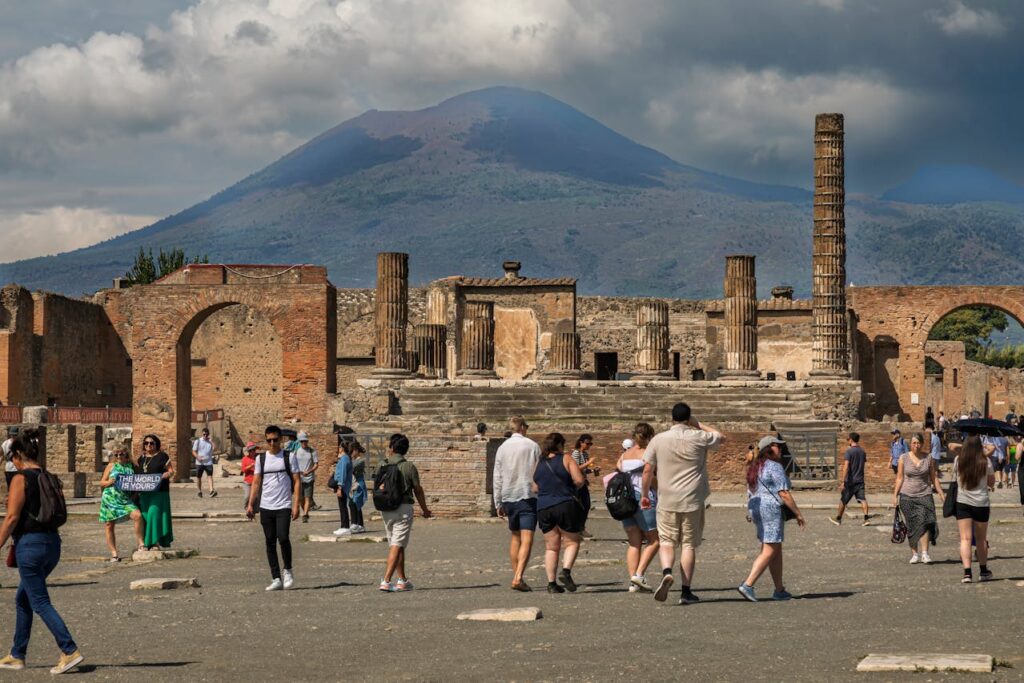
Pompeii is a must-visit for anyone interested in ancient civilizations. The city, frozen in time after the eruption of Mount Vesuvius in 79 AD, offers an unparalleled glimpse into life during the Roman Empire. Wander through its remarkably preserved streets and buildings, from homes to bathhouses, and observe the ancient frescoes and artifacts left behind. It is a place where history comes to life, with everything from the grand amphitheater to the tragic plaster casts of those who perished during the eruption. Visiting Pompeii feels like stepping into a time machine, allowing you to experience Roman society firsthand.
In addition to the ruins themselves, Pompeii’s location near Naples and the Amalfi Coast makes it an ideal base for exploring other archaeological sites like Herculaneum and Mount Vesuvius. The ongoing excavations ensure there is always something new to discover. Whether you are walking down the cobbled streets or marveling at the intricate mosaics, Pompeii is a history lover’s dream come true.
Machu Picchu, Peru
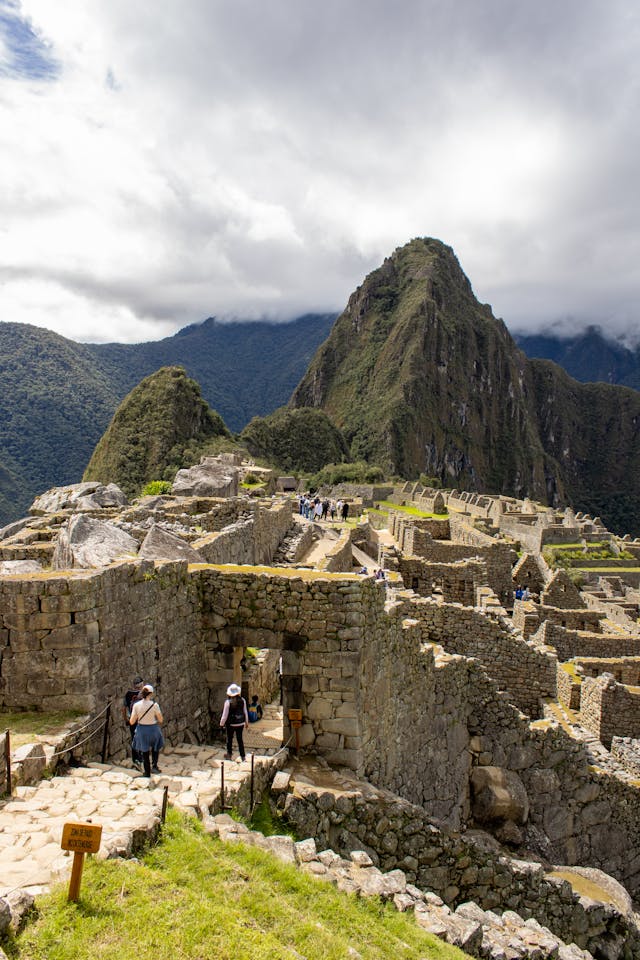
The Incan citadel of Machu Picchu is a world-renowned historical site that attracts thousands of visitors annually. Located high in the Peruvian Andes, this ancient city is an architectural marvel that was built by the Incas in the 15th century. Its exact purpose remains a mystery, but it is believed to have been a royal estate or religious site. The sheer ingenuity of its construction, with terraces, temples, and complex water systems, showcases the skill of the Inca civilization.
Visiting Machu Picchu is a humbling experience, especially when you hike the Inca Trail, following in the footsteps of ancient travelers. The breathtaking views of the surrounding mountains and lush greenery make it clear why the site has remained an awe-inspiring landmark for centuries. The sense of history and mystique surrounding Machu Picchu adds to its allure, making it an unforgettable destination for history enthusiasts.
The Great Wall of China, China

The Great Wall of China stretches over 13,000 miles, offering a fascinating glimpse into China’s ancient defense systems. The wall, originally built to protect the Chinese state from invading forces, is a remarkable feat of engineering. Walking along the wall, especially at the less crowded sections like Jinshanling or Simatai, is a surreal experience, where you can imagine what it was like for soldiers stationed there centuries ago. The view of the wall snaking across the mountains is equally captivating.
Not only is the Great Wall a testament to the ingenuity of ancient Chinese builders, but it also holds stories of battles and cultural significance. Its long history, spanning over 2,000 years, makes it a top choice for history buffs. Visitors can learn about the history of the wall at various museums along its length, which delve deeper into its military and cultural relevance.
The Colosseum, Rome, Italy

No trip to Rome is complete without visiting the iconic Colosseum, one of the most recognizable symbols of Ancient Rome. The grand amphitheater once hosted gladiatorial combat, animal hunts, and mock naval battles, drawing massive crowds from across the Roman Empire. Today, the Colosseum stands as a monumental reminder of Rome’s imperial past and its architectural prowess. Walking through the ruins, you can almost hear the roars of the crowds and feel the excitement of the games.
A visit to the Colosseum is an immersive history lesson, with plenty of informative exhibits and tours available to help you understand its complex history. Beyond the Colosseum, the surrounding Roman Forum and Palatine Hill offer even more insights into ancient Roman life, making this area a must-see for anyone passionate about history.
The Pyramids of Giza, Egypt

The Pyramids of Giza are perhaps the most famous ancient structures in the world, and for good reason. These enormous monuments, built as tombs for the pharaohs, have stood the test of time for over 4,500 years. Standing before the Great Pyramid of Khufu is a humbling experience, as it is the only remaining wonder of the Seven Wonders of the Ancient World. The sheer scale and precision of the pyramid construction continue to amaze visitors, especially considering the technology available at the time.
A visit to the Giza Plateau offers a chance to explore the ancient burial complexes, including the Sphinx and other pyramids. The Egyptian Museum in Cairo further enriches the experience, displaying countless artifacts from the era, many of which were found in the pyramids themselves. These iconic structures provide a unique opportunity to connect with one of the oldest civilizations on Earth.
Angkor Wat, Cambodia
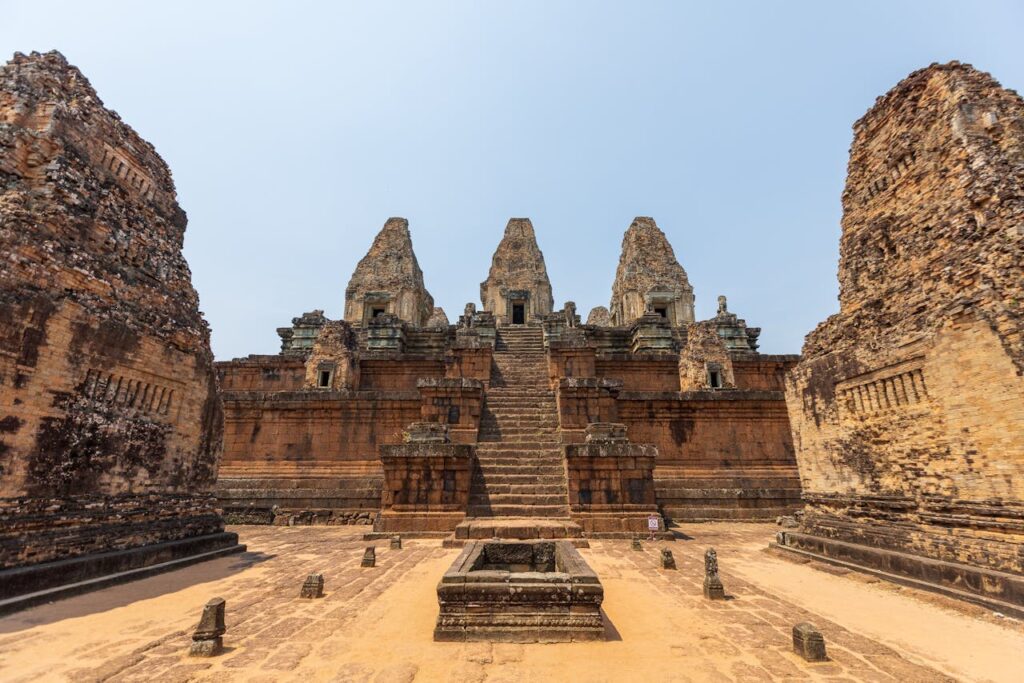
Angkor Wat is a breathtaking temple complex and one of the most significant archaeological sites in Southeast Asia. Originally built in the 12th century as a Hindu temple, it later became a Buddhist site, and it remains an important pilgrimage location. The intricate carvings, towering spires, and vast grounds tell the story of the Khmer Empire’s grandeur. Visitors can explore the expansive temple grounds, discovering hidden corners and detailed stone reliefs that showcase scenes from Hindu mythology.
The surrounding Angkor Archaeological Park is home to numerous other temples, such as Bayon and Ta Prohm, which were made famous by the movie Tomb Raider. The spiritual significance and historical importance of Angkor Wat make it an essential stop for history buffs interested in ancient religions and empires. Sunrise visits offer an especially magical experience, with the sun casting a golden glow over the temples.
Chichen Itza, Mexico

Chichen Itza, an ancient Mayan city located on Mexico’s Yucatan Peninsula, is famous for its massive pyramid, El Castillo, which was used for astronomical and religious purposes. The city itself was a thriving metropolis for centuries before it was abandoned. The archaeological site offers a unique look into Mayan civilization, showcasing advanced knowledge of mathematics, astronomy, and architecture. The Pyramid of Kukulcan, in particular, is a marvel, with its steps and shadow patterns aligning perfectly with the equinox.
Exploring Chichen Itza gives visitors a chance to step back in time and imagine what life was like during the peak of the Mayan Empire. The site’s impressive ball court, sacred cenote, and observatory reveal the complexity of Mayan society and their understanding of the cosmos. This UNESCO World Heritage site is a fascinating destination for history buffs and those interested in ancient cultures.
The Acropolis of Athens, Greece

The Acropolis of Athens is an ancient citadel perched above the city, home to some of the most iconic structures of Ancient Greece. The Parthenon, dedicated to the goddess Athena, is perhaps the most famous of these, with its grand columns and intricate sculptures. The Acropolis Museum nearby provides further insight into the site’s history, showcasing artifacts and pieces from the Parthenon. Walking through the Acropolis, you can marvel at the impressive ruins while imagining how this site served as the center of Greek culture and democracy.
The Acropolis is not only an architectural wonder but also a symbol of Western civilization’s beginnings. It provides a fascinating glimpse into Ancient Greek life, from politics to religion to artistic achievements. The surrounding city of Athens offers even more historical sites, such as the Agora and the Temple of Olympian Zeus.
Stonehenge, England
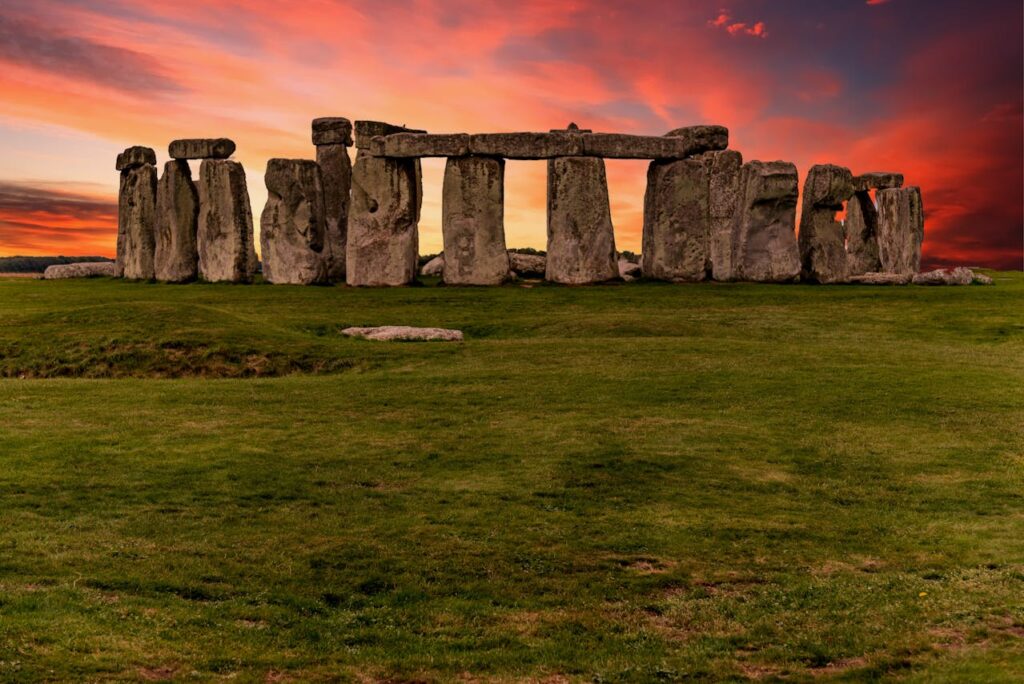
Stonehenge is one of the most enigmatic and mysterious historical sites in the world. This prehistoric monument, built over 4,000 years ago, consists of massive stones arranged in a circular formation, but the exact purpose of the site remains a subject of debate. Some believe it was an astronomical observatory, while others argue it had spiritual or ceremonial significance. The sheer size of the stones and their precise arrangement continue to fascinate visitors and archaeologists alike.
Visiting Stonehenge is a unique experience, where you can ponder the ancient people who constructed it with limited technology. The nearby visitor center provides context and theories surrounding the monument’s origins, adding depth to your understanding. The surrounding Salisbury Plain and the nearby Avebury henge also provide more prehistoric sites worth exploring.
Chernobyl, Ukraine
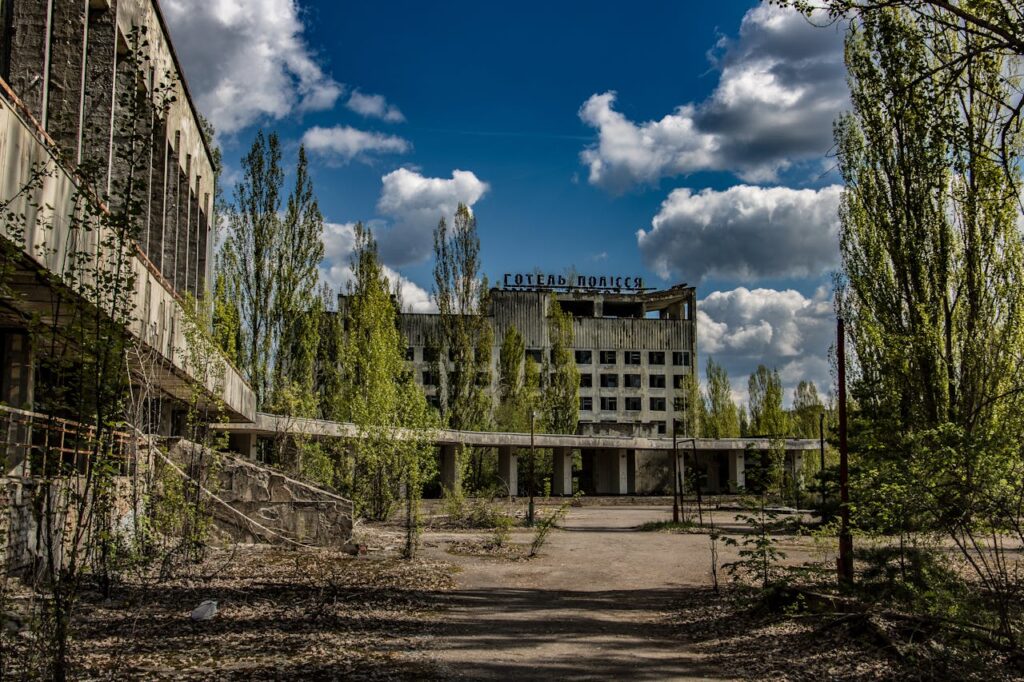
The Chernobyl Exclusion Zone is a haunting and fascinating destination for those interested in modern history and the legacy of the 1986 nuclear disaster. The site of the Chernobyl Nuclear Power Plant, abandoned after the catastrophic meltdown, offers a chilling glimpse into the aftermath of one of the worst nuclear accidents in history. Guided tours take visitors through the ghost town of Pripyat, where homes, schools, and amusement parks remain eerily intact.
Though it is a somber experience, Chernobyl offers a unique opportunity to explore the remnants of a once-thriving community and the lasting impact of nuclear fallout. The desolate landscape and decaying buildings provide a powerful reminder of the risks of technological failure. For history buffs interested in 20th-century events, Chernobyl is a profound and thought-provoking place to visit.
Tulum, Mexico

Tulum, located on the coast of the Yucatán Peninsula, offers a rare combination of stunning natural beauty and ancient ruins. Once a major port for the Mayan civilization, Tulum’s well-preserved ruins overlook the Caribbean Sea. The site includes the Temple of the Wind, which was used for religious ceremonies, and the Temple of the Descending God, which features intricate carvings. Tulum provides visitors with the chance to learn about Mayan culture while enjoying the stunning backdrop of turquoise waters and sandy beaches.
In addition to the archaeological ruins, Tulum is known for its eco-friendly resorts and pristine beaches. This makes it a unique travel experience for those who want to combine history with relaxation. Tulum’s historical significance as a Mayan port city and its natural beauty make it a popular choice for history buffs looking for a unique getaway.
Mount Rushmore, United States

Mount Rushmore is an iconic monument located in the Black Hills of South Dakota. Carved into the mountain’s granite face are the 60-foot heads of four U.S. presidents: George Washington, Thomas Jefferson, Theodore Roosevelt, and Abraham Lincoln. The monument serves as a testament to the history of the United States and its leaders, making it a must-visit for history buffs. Visitors can learn about the monumental construction project and the history of the presidents at the visitor center, where exhibits provide insight into the lives of these historical figures.
The surrounding Black Hills offer additional opportunities for exploration, including nearby historical sites like Crazy Horse Memorial and Custer State Park. Mount Rushmore is a must-see for anyone interested in U.S. history and national symbols, offering both a grand historical perspective and an impressive view of American craftsmanship.
The Dead Sea, Jordan/Israel

The Dead Sea, located between Jordan and Israel, is one of the saltiest bodies of water on Earth and a unique destination for history buffs. Its ancient history spans thousands of years, with references in religious texts like the Bible. The region has been a center for trade, and the famous Qumran Caves, where the Dead Sea Scrolls were discovered, add to the site’s historical significance. The scrolls, believed to have been written between the 3rd century BCE and the 1st century CE, provide invaluable insight into ancient Jewish history.
In addition to its historical significance, the Dead Sea offers therapeutic benefits due to its mineral-rich waters and mud. Visitors can float effortlessly in its high-salinity waters and experience the unique healing properties of the environment. For those interested in history and natural wonders, the Dead Sea offers a rare combination of both.
This article originally appeared on Avocadu.
